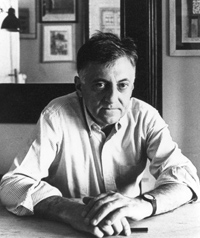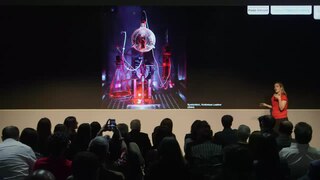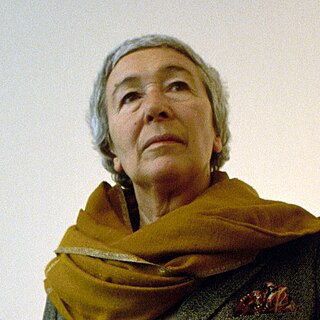
Casabella is a monthly Italian architectural and product design magazine with a focus on modern, radical design and architecture. It includes interviews with the world's most prominent architects.

Casabella is a monthly Italian architectural and product design magazine with a focus on modern, radical design and architecture. It includes interviews with the world's most prominent architects.
Casabella was founded in 1928 [1] [2] at Milan by Guido Marangoni. Its initial name was La Casa Bella (The Beautiful Home). In 1933, the architect Giuseppe Pagano became editor, changing the name to Casabella. Subsequently, the architect Ernesto Nathan Rogers, who edited the magazine from 1953 to 1965, changed the name further to Casabella Continuità, Casabella Costruzioni, Costruzioni Casabella, and, after the departure of Rogers, Casabella. [3]
During its history, Casabella featured many important architects and designers, including Franco Albini, Gae Aulenti, and Marco Zanuso, contributing as creative editors. It has also published some articles written by Barry Bergdoll, curator at the Department of Architecture and Design of The Museum of Modern Art (MOMA) of New York City.
After being edited by Vittorio Gregotti between 1981 and 1996, the magazine's editorial helm has been taken over by Francesco Dal Co. It is published by Gruppo Mondadori with a 2014 circulation of 45,000 copies. [1]

Aldo Rossi was an Italian architect and designer who achieved international recognition in four distinct areas: architectural theory, drawing and design and also product design. He was one of the leading proponents of the postmodern movement.

Carlo Mollino was an Italian architect, designer, photographer and educator.

Bruno Munari was "one of the greatest actors of 20th century art, design and graphics." He was an Italian artist, designer, and inventor who contributed fundamentals to many fields of visual arts in modernism, futurism, and concrete art, and in non-visual arts with his research on games, didactic method, movement, tactile learning, kinesthetic learning, and creativity. On the utility of art, Munari once said, "Art shall not be separated from life: things that are good to look at, and bad to be used, should not exist."

Ernesto Nathan Rogers was an Italian architect, writer and educator.

The Sacco chair, also called a bean bag chair,beanbag chair, or simply a beanbag, is a large fabric bag, filled with polystyrene beans, designed by Piero Gatti, Cesare Paolini and Franco Teodoro in 1968. The product is an example of an anatomic chair, as the shape of the object is set by the user. “[The Sacco] became one of the icons of the Italian anti-design movement. Its complete flexibility and formlessness made it the perfect antidote to the static formalism of mainstream Italian furniture of the period,” as Penny Spark wrote in Italian Design – 1870 to the Present.

Alessandro Mendini was an Italian designer and architect. He played an important part in the development of Italian, Postmodern, and Radical design. He also worked, aside from his artistic career, for Casabella, Modo and Domus magazines.

Giuseppe Pagano was an Italian architect, notable for his involvement in the movement of rationalist architecture in Italy up to the end of the Second World War. He designed exhibitions, furniture and interiors and was an amateur photographer. He was also a long-time editor of the magazine Casabella.

Paola Antonelli is an Italian architect, curator, author, editor, and educator. Antonelli is the Senior Curator of Architecture and Design at the Museum of Modern Art (MoMA), New York, where she also serves as the founding Director of Research and Development. She has been described as "one of the 25 most incisive design visionaries in the world" by TIME magazine.

Gaetana "Gae" Aulenti was an Italian architect and designer who was active in furniture design, graphic design, stage design, lighting design, exhibition and interior design. She was known for her contributions to the design of important museums such as the Musée d'Orsay in Paris, the Contemporary Art Gallery at the Centre Pompidou in Paris, the restoration of Palazzo Grassi in Venice, and the Asian Art Museum of San Francisco. Aulenti was one of only a few women architects and designers who gained notoriety in their own right during the post-war period in Italy, where Italian designers sought to make meaningful connections to production principles, and influenced culture far beyond Italy. This avant-garde design movement blossomed into an entirely new type of architecture and design, one full of imaginary utopias leaving standardization to the past.
Domus is an architecture and design magazine founded in 1928 by architect Gio Ponti and Barnabite father Giovanni Semeria. Published by Editoriale Domus, the magazine is issued 11 times a year on a monthly basis and has its headquarters in Rozzano, Milan.

Marco Zanuso was an Italian Modernist architect and designer.

In architecture, Rationalism is an architectural current which mostly developed from Italy in the 1920s and 1930s. Vitruvius had claimed in his work De architectura that architecture is a science that can be comprehended rationally. The formulation was taken up and further developed in the architectural treatises of the Renaissance. Eighteenth-century progressive art theory opposed the Baroque use of illusionism with the classic beauty of truth and reason.

Luigi Walter Moretti was an Italian architect. Active especially in Italy since the thirties, he designed buildings such as the Watergate Complex in Washington DC, The Academy of Fencing, and Il Girasole house, both in Rome. He was the founder of the Institute for Operations Research and Applied Mathematics Urbanism, where he developed his research on the history of architecture, and on the application of algorithmic methods to architectural design. He is recognized as the inventor of parametric architecture.

Francesco Dal Co is an Italian historian of architecture. He graduated in 1970 at the University Iuav of Venice, and has been director of the Department of History of Architecture since 1994. He has been Professor of History of Architecture at the Yale School of Architecture from 1982 to 1991 and professor of History of Architecture at the Accademia di Architettura of the Università della Svizzera Italiana from 1996 to 2005. From 1988 to 1991 he has been director of the Architectural Section at the Biennale di Venezia and curator of the architectural section in 1998. Since 1978 he has been curator of the architectural publications for publishing House Electa and since 1996 editor of the architectural magazine Casabella.
Hina Jamelle is an architect living in the United States.

Emilio Ambasz is an Argentinian-US architect and award-winning industrial designer. From 1969 to 1976 he was Curator of Design at the Museum of Modern Art, in New York. Ambasz has been labeled as "the father, poet, and prophet" of the green architecture by Japanese architect Tadao Ando.
Angiolo Giuseppe Fronzoni (1923–2002), more commonly known as AG Fronzoni, was an Italian graphic designer, publisher, industrial designer, architect, and educator.
Nieto Sobejano Arquitectos is an architecture firm, founded in 1984 by Fuensanta Nieto and Enrique Sobejano with offices in Madrid and, since 2007, in Berlin.

Mirko Zardini is the former Director and a member of the Board of Trustees of the Canadian Centre for Architecture (CCA) in Montreal, Quebec, Canada. He is an architect who teaches, curates exhibitions, and writes about contemporary architecture and urban issues. Zardini is an active member and former trustee of the Association of Art Museum Directors (AAMD), is on the Executive Committee of the International Confederation of Architectural Museums (ICAM), and is a member of the Canadian Art Museum Directors Organization (CAMDO).
UFO was a design and architectural group founded in Florence, Italy, active between 1967 - 1978. A major part of the Radical architecture and design movement of the late 1960s, they studied under Umberto Eco at the University of Florence. Fellow alumni included the founders of Superstudio and Archizoom Associati.